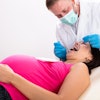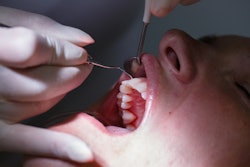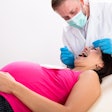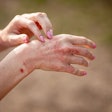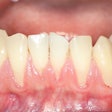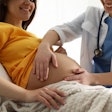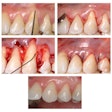Increased alcohol consumption may raise the risk of periodontitis, lead to deeper periodontal pockets, and result in a higher proportion of increased sites with greater probing depths (PDs). The study was published earlier this March in the Journal of Clinical Periodontology.
Additionally, consuming more alcohol may be linked to an increased risk of higher clinical attachment levels (CALs), the authors wrote.
"We found an association between alcohol intake and periodontitis risk," wrote the authors, led by Sebastian-Edgar Baumeister of the University of Münster Institute of Health Services Research in Dentistry in Germany.
For this study, researchers analyzed data from 1,285 participants across two population cohort studies, examining the relationship between baseline average alcohol consumption and periodontitis incidence over a median follow-up of five years, they wrote.
PD and CAL were assessed with a manual periodontal probe at four sites in partial-mouth examinations, with one side randomly selected at baseline and fixed for follow-up. Average alcohol consumption was calculated based on the frequency and quantity of beer, wine, and spirits consumed, using standard ethanol content values.
Over a median follow-up of five years, 282 participants developed moderate to severe periodontitis. Baseline average alcohol intake was prospectively linked to incident moderate to severe periodontitis, with relative risks (RRs) of 1.08 (95% confidence interval [CI]: 1.06 to 1.10) for 30 g/day and 1.23 (95% CI: 1.17 to 1.28) for 60 g/day, compared to 10 g/day, they wrote.
Similar associations were observed among never-smokers (RR of 1.10 [1.07 to 1.12] for 30 g/day versus 10 g/day; RR of 1.29 [1.20 to 1.39] for 60 g/day versus 10 g/day). Additionally, baseline alcohol intake was linked to an increased risk of deeper periodontal pockets, higher CAL, and a greater proportion of sites with PDs and CALs of ≥ 3 mm and ≥ 4 mm.
However, the study had limitations. Single baseline alcohol measurement with a 30-day recall may have caused regression dilution bias, highlighting the need for repeated assessments, the authors wrote.
In the future, more quasi-experimental studies and policy evaluations should be conducted to strengthen the causal link between alcohol consumption and health outcomes.
"Such research will be crucial for developing effective strategies to mitigate the adverse oral health effects associated with alcohol consumption," they concluded.

